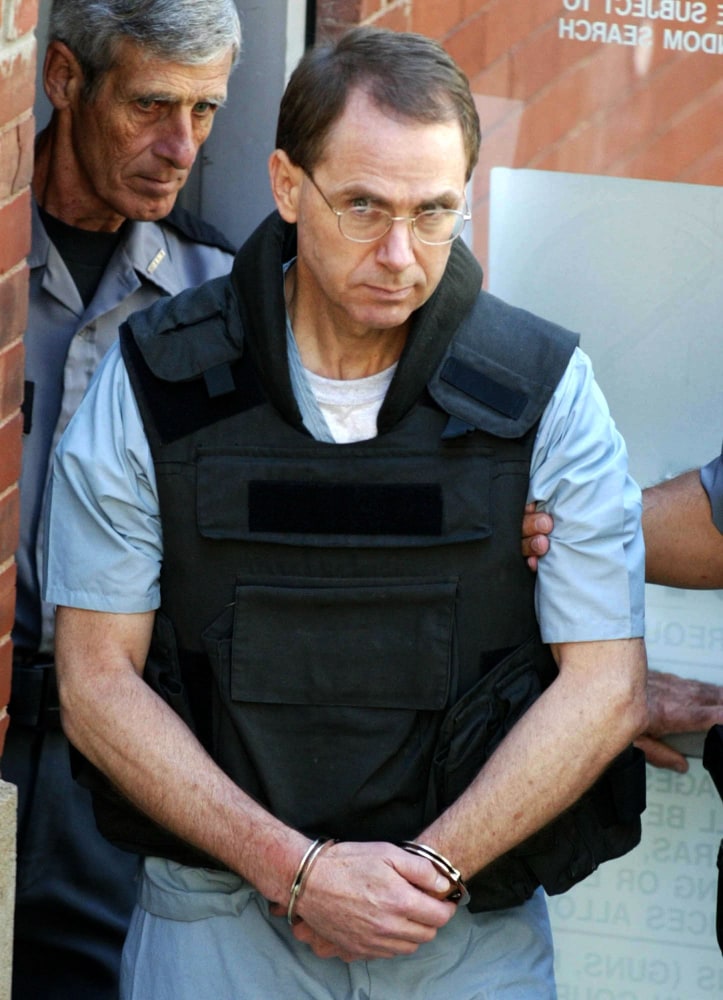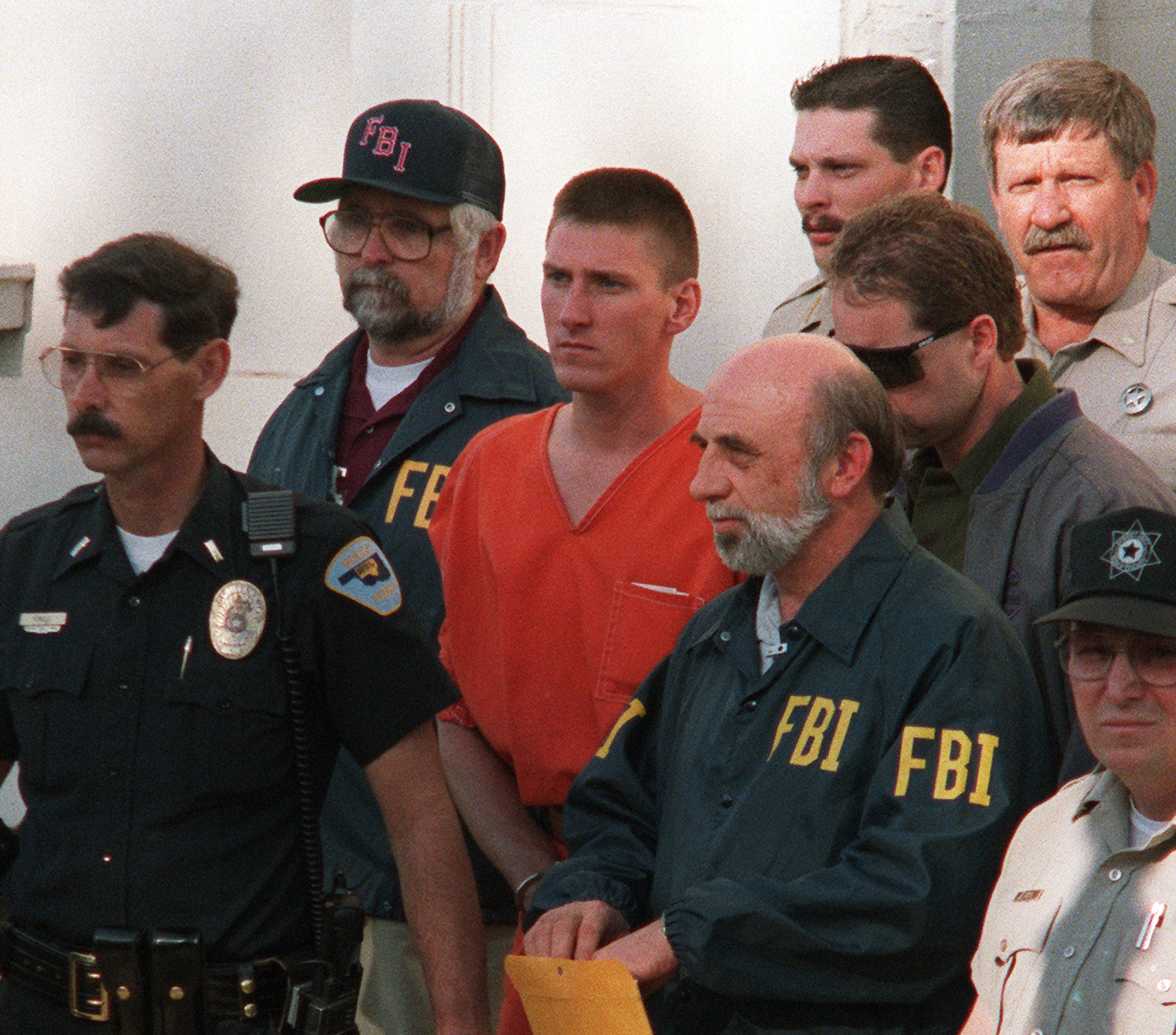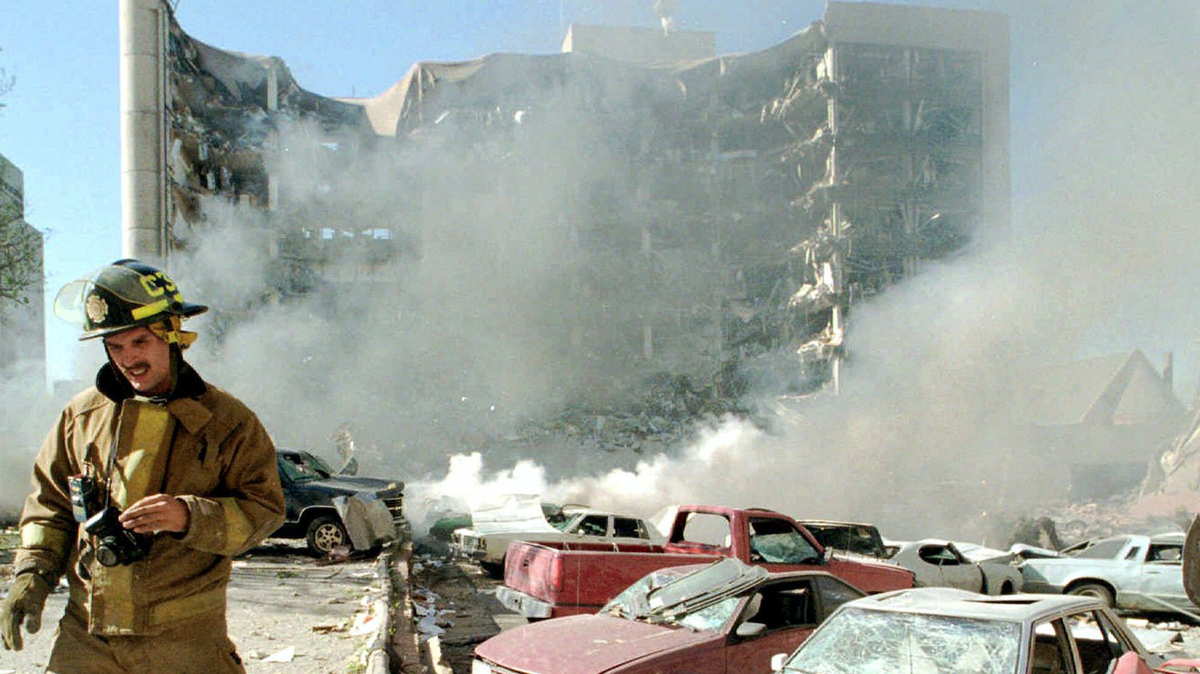It is vitally important to make sure that present and future generations know where we stand on issues. We stand on the courage and actions of previous generations like Generation X, the Baby Boomers, the Silent Generation, the WWII Generation, etc. Therefore, our modus operandi is never about downplaying the legacies of past icons, because they have valuable insights in how we should conduct our own lives. The following eight principles are what I believe in my heart and spirit. It has been a long journey creating blogs, being on forums, showing the facts in public, and writing information on other social media for over 20 years now. For almost three decades since 1997, I learned of the truth on a higher level. I created my first major blog in 2005 being in my early 20s. Now, in 2025, I am in my early 40s. Therefore, time has rapidly transversed in my life. My maturity and understanding about how the world works has certain improved over the course of more than 2 decades. We live in a new time now as we are not children anyone. Numerous people, who are Millennials, are in middle age now. As a middle aged black human being (me being a Millennial too), you think about the big picture and reflect more on life. A lot of legends have passed away. We miss them to this day.
Being on this Earth, you get the time to know people of many walks of life. You grow, and you realize what is fundamentally important to show love and the truth to the people. It is about working in our communities to improve our lands, and it is to work together in a common cause to promote peace, justice, and truth. Not to mention that following morality, integrity, sacrifice, and righteousness will lead into a fruitful life spiritually, emotionally, and physically (as exercise and healthy eating will work wonders for people. This is done not for narcissism as some claim. It is about living a more expansive, tranquil longevity). I have been around in many places of the world, and I have known a lot of human beings. One secret lesson in life is to always strive to be the best version of yourself intellectually, spiritually, physically (exercising, eating healthy, drinking water, read, learning more vocabulary, develop social skills, getting rid of toxins, and getting regular medical checks up will cause you to live longer. Also, get blood work, so you can know your vital health metrics), emotionally, and financially (without materialism and a lust for money). Doing that will bless you in manifold ways. Doing something is better than doing nothing. Doing action makes sense. Another key point that I want to make is that we should promote compassion and empathy too. Far too often, some want to show meanness including disrespect (or a passive-aggressive attitude), and disguise it as being "real." That isn't being real. It's all about promoting evil. So, in our lives, we should show our empathy and human compassion to those suffering as other people have shown humility and compassion towards us before. Maintaining your boundaries like always is vital, but we should never lose our humanity. Never give up in life as life is a precious gift meant to be explored, lived, cherished, and filled with development. Our humanity certainly means that we show goodwill towards human beings of every background. Also, it is important to give wisdom and inspiration to the younger generation (who are in their 20s from Generation Z, Generation Alpha, etc.) who are doing great work in sending the truth out to humanity. As I have mentioned before, anyone 25 years old or younger is a baby to me. So, we must allow the babies to grow (with our advice and tools) and establish their legacies (expressing their own power) as human beings.
The younger generation has used technology from TikTok to various new school apps and being in the streets to express their unique ideals that ought to be respected. I wanted these 8 pristine principles to encompass my core convictions. Obviously, there are more than 8 principles that I live by, because we are multifaceted human beings. Yet, I chosen these specific types of principles as they are highly important in my value system or my moral core. If someone wants to know what my political views are all about, then these 8 precepts wholeheartedly exemplify what I am all about ideologically. These are the values that I hold dear and live by in my daily walk in the Earth. Here they are:
1. The Protection of Civil Liberties: For millennia, human beings have developed civilizations. These civilizations spread in the four corners of this Earth filled with scholars, inventors, architects, teachers, lawyers, doctors, entertainers, athletes, entrepreneurs, religious leaders, financial experts, etc. Our civil liberties always matter for many reasons. Civil liberties protect our individual and collective rights. They teach us about the importance of community and our power as individuals. The Bill of Rights promote the concept of civil liberties that can't took away. Many people take civil liberties for granted, but other nations in the world have much less rights than we have in America. Numerous folks don't realize how blessed they are. Therefore, we must realize that our civil liberties (which are fundamental rights and freedoms guaranteed to individuals) ought to be protected and strengthened like the freedom of speech, the right to protest, the right to bear arms (I believe that gun rights is an individual right, but I agree with reasonable gun control regulations to save lives and protect our communities), protection from unreasonable searches and seizures, the right of due process, etc.
2. Environmental Justice: I will forever be pro-environment. I live in an urban environment and that environment taught me that planting trees, throwing trash away in trash cans, and being careful on how I treat Nature are important actions to pursue. You can't be a revolutionary or a person who cares about the world without being in favor of helping the environment. When I was a child, the cartoon show Captain Planet certainly inspired to care for the environment in a higher level. It is important to promote clean air, clean water, and protections of animal species. Also, with climate change, we realize that the Earth is much warmer than decades ago as proven by scientific research filled with true data. Even back during the Johnson administration during the 1960s, authorities warned the public about climate change. That is why clean energy has worked wonders to help humanity globally to deal with the real problem of climate change. Helping the environment means to get rid of toxins in the waters including the oceans, it means to improve our health, it means to think about things beyond ourselves from recycling to improving air quality. Earth Day reminds us of that deforestation, biodiversity loss, and other evils must be combatted. We certainly don't need more cuts to NOAA. We desire more investments in disaster relief funds and NOAA, so we can save human beings' lives. With new issues like BPAs, radiation, etc., we must be cognizant on the importance of developing a better Earth.
3. The Freedom of the Press, Speech, and Religion: Those three freedoms are what I cherish. In this generation, many people want to bash all of the media. I don't agree with that view, because tons of independent media institutions are doing yeoman's work in presenting to the people the unvarnished truth without censorship like The Real News Network, etc. The freedom of the press means that the press should be given the right to do their jobs without harassment or unfair scapegoating from any administration (or any human being). It means that the press should ask the tough questions to anyone without partiality. It's all about getting the story right as accurate as possible as it pertains to the motivation of the agenda of the press. The press has every right to ask questions about numerous issues like political issues, economic matters, social issues, and other issues pertaining to the human race. PBS has a strong media service historically that ought to be invested in. The freedom of speech means to express our ideals. I have been censored even in YouTube before, so I know what it feels like to have my words gone. The freedom of speech is about human expression, being bold at times, being honest about your thinking, and going out to express other freedoms. We know that slander and libel are not about the freedom of speech, but malicious activities done to hurt people. So, I don't agree with slander and libel.
The freedom of religion is self-explanatory. Many Christians, Muslims, Sikhs, and religious minority groups are persecuted worldwide now in places like Nigeria, China, Indonesia, India, Pakistan, Afghanistan, Iran, and other countries. That is wrong as no one should be persecuted because of his or her religious faith. In America, we have the freedom of religion which I agree with. This doesn't mean we support a theocracy as extremists believe, and this doesn't mean that showing religious expression in public should be banned as other extremists desire. It means that people can publicly or privately express their religious faith as long as it doesn't violate the human liberties of another person. I believe in the separation of church and state as the government shouldn't have the right to endorse a religion or infringe on the rights of others based upon religion. Also, people have the right to believe in religion or not in a free and open society. That means that religious people, atheists, agnostics, etc. should have equal rights in the Earth. For me personally, I believe in God. I believe that the Lord Jesus Christ is my Lord and Savior (Yeshua HaMashiach) who died on the cross and rose from the dead saving the sins of the whole world as the only begotten Son of the living God. I believe in God the Father, and I believe in the power of the Holy Spirit (Ruach Ha Kodesh).
4. The Rejection of Tyranny and the Rejection of Fascism: I reject authoritarianism. We have to keep it real and realize that Donald Trump is a tyrant and we live in America now filled with fascism. For over two decades, I have written in opposition to authoritarian governments, Big Brother policies that infringes on human civil liberties, and fascism. Many of our ancestors fought fascism during WWII as two of my distant cousins, who are Leslie Goffigon Jr. and Delaware Floyd Harris Sr, fought the Nazis at Normandy on June 6, 1944. For the record, I don't agree with the creation of the new world order. I don't agree with the creation of a global government as I believe that nation-states can trade and cooperate with each other (even with alliances) without such an agenda that centralizes power more into fewer hands.
I oppose the agenda of oligarchy. There is irony on this issue. Alex Jones and people of that ilk (who are far right compromised MAGA extremists) during the 1990s and 2000s talked about black helicopters, tyranny, camps, and the military in the streets. These same people are silent in 2025 (during the 2nd term of Donald Trump) when we have military in the streets of Los Angeles, ICE arresting even U.S. citizens without due process of law, we have Trump allowing the construction of actual internment camps to house migrants and immigrants, we have actual Muslim bans, and Stephen Miller desiring if habeas corpus should be abolished (to promote his xenophobic agenda). Alex Jones slandered the Sandy Hook victims, and he has been ordered to pay nearly $1 billion to the Sandy Hook families. That shows them (people like Alex Jones, etc.) to be hypocrites as they don't want to criticize Trump on his blatantly authoritarian policies including the Supreme Court giving Trump near total immunity on any crime. This is an example of how we must remain consistent to oppose tyranny and fascism regardless of who is in office. It is wrong to witness DEI programs gone, to witness innocent federal workers to be fired for no reason, to see families split because they are migrants, to witness a massive increase of the executive branch of government enacting unconstitutional policies, and brainwashed people agreeing with Trump unconditionally. We will endorse liberty and freedom without compromise.
5. Equality for all: I mean that precept. I believe all people are created equal in the image of God and are entitled to life, liberty, and the pursuit of happiness without exception. Equality doesn't mean that everyone is identical. Even twins aren't genetically 100 percent identical. Many far-right people (like red pill extremists, Hoteps, racists, sexists, xenophobes, MAGA followers, etc.) confuse equality with identical. Equality means that everyone has equal worth and equal value, deserving to be treated with the same dignity and respect afforded to all people. I reject sexism and xenophobia. Some of the far-right extremists obsess over the concept of criticizing "woke" not to oppose extreme political correctness, but many of them desire to deprive minority groups of fundamental human rights. Woke means acknowledging the dignity, humanity, and suffering of oppressed people and advancing the necessity to take action to eliminate injustices and discrimination. Equality doesn't mean to ignore oppression or embrace the falsehood that we live in a complete meritocracy. It does mean that injustice and oppression should be fought against, so the system of racism/oppression can be replaced with an authentic system of justice and liberty for all in the human race.
6. Advancing the General Welfare (and the Social Safety Net): For the eons of human history, people always honored the general welfare. The Preamble of the U.S. Constitution cited the right of the government to promote the general welfare of the people. That means that the government does have the right to provide resources to help human beings for sincere reasons. Therefore, I will always believe in a strong social safety net to help the homeless, the poor, the working class, and the middle-class people of the Earth. It has been sixty years after the creation of Medicare and Medicaid, which were signed into law by President Lyndon Baines Johnson. The social safety net is readily grown by our work. We work hard and earn our Medicare and Social Security benefits. Medicaid is for the poor, those with disabilities, and other human beings who desire them. We have an unjust law that cuts Medicaid, SNAP, and other social programs massively while giving $1 trillion in tax breaks for the super wealthy. That is why people from across the political spectrum desire a strong social safety net to assist millions of Americans and other people worldwide. By nature, I am opposed to austerity as radically cutting the social safety net and radically cutting foreign aid (including cuts to the highly successful Pepfar program that has helped to save people's lives from HIV/AIDS overseas) will harm people in America and worldwide. During the Great Depression (and before that event), millions of Americans didn't have adequate retirement insurance. That is why people made President Franklin Delano Roosevelt to sign a law to make the Social Security Act in order to allow Americans to have Social Security after a certain age, usually in their late 60s now. Social Security has saved tons of lives for generations. A robust public social safety net is a blessing for the human race in general.
7. Economic Justice: I am fully an economic progressive for life and for eternity. That means that I don't believe that large corporations should do what they want whenever they desire. There should be legitimate regulations in how businesses, corporations, and people in general should operate. For example, we should have policies involving handling air safety, so plane crashes can decline. We want regulations on food and drug safety, so people won't be sick or ill from bad foods or dangerous drugs. We desire a great disaster response and public health safety in order to safe human lives literally. These legitimate regulations have nothing to do with harming economic power. It is about making the economy truly fair for all people, irrespective of a person's income level. Economic justice means living wages, universal health care, affordable housing, and a system that fights against poverty (not grows it). No American can live on $7.25 an hour, especially if that person has children. In our time, that income can't allow people in the United States to get benefits, pay for rent, get food, buy a car, and pay for utilities in a modern-day society. So, the minimum wage in America should be higher than that amount to be a living wage.
That is why we can't view Capitalism or Communism as infallible (I don't agree with Stalinist Communism as that philosophy violates human civil liberties, makes humans just cogs in the wheel of the state, and Stalin himself became an anti-Semitic, unstable male before his passing). These are man-made economic systems with imperfections. Anyone who makes capitalism a deity (or wants capitalism to be followed unconditionally) is doing idol worship, and capitalism does merit some legitimate critique. We have the problems of many large corporations who ship millions of Americans jobs overseas, oppress workers overseas, pollute the environment, lobby for governments to promote unfair trade agreements, and allow people to scapegoat immigrants (who desire to live a better life) in a xenophobic fashion (instead of the one percent) for economic sufferings in the world. It is false to assume that capitalism is ordained and preordained to rule the economic system of the world (to manage humanity in just the rich, middle class, and the poor in a survival of the fittest mentality) when Adam Smith, David Richardo, and Thomas Malthus (capitalist leaders) either supported eugenics, followed anti-poor scapegoating, and desire other systems that makes a lax effort to promote the rights of workers. I certainly do agree with Dr. Martin Luther King Jr.'s, Ella Baker's and Malcolm X's critiques of capitalism too. Some have talked and wrote about the necessity of a class struggle to enact true economic justice. By the 2010s, I accepted this premise as I lived through the Great Recession and saw the suffering of many people in dealing with the recession while Wall Street had massive bailouts in the billions of dollars. Therefore, I had to analyze things more to witness the importance to promote a radical redistribution of economic and political power in order for class oppression to be gone.
It is hypocritical for the far right and neoliberal moderates to lecture to the poor about a work ethic to escape poverty when these same people (who love MAGA) live in gated communities and support economic policies that strip the poor of living wage jobs that they need to support themselves. In other words, there is nothing wrong with having money, but far too often, many people (especially some super rich people) exploit money to look down on the poor, advance materialism, love covetousness, and desires a selfish individualism that doesn't take into account the collective responsibility of us all to promote economic justice for all people. The vast majority of the poor, working class, and middle class work very hard all of the time, refuting the lie that poor people lack a strong work ethic. Workers have every right to have labor rights, to have adequate benefits, including pensions, and the right to strike. We don't want corporate welfare for the super wealthy, we reject financial fraud, and we want the government to really work for the people. True government is made by the people and for the people, because true government exists to increase the blessings of liberty and justice for all people.
8. Racial Justice: I am a black American man, so I believe in racial justice by default. Racial justice means that black people should have the same rights as anyone else without oppression, without racism, and without discrimination. This has nothing to do with hating non-black people. It has to do with not whitewashing our history, not following the myth that America is without sin (or America is infallible) and desiring true representation in our society. To this day, black people are unjustly murdered by the police, discriminated against, called slurs (recently a white racist woman called a black child the n word in Rochester, Minnesota. The racist white woman has been funded with massive financially support by white racists), abused, kidnapped (as missing black people are underreported by many in the corporate media), and exploited constantly. That reality has been ignored or minimized by racists. We should keep on fighting for justice and never bow down to injustice. The current oppressive and racist system must be replaced with a system of justice, period.
Black culture is great too. Black culture is diverse. It relates to how we cook our cuisine from gumbo, rice dishes, various vegetables, many meats, and to greens. Black culture is how we write literature from books to magazines that showcase our genius, our beauty, and our personalities. Black authors from Toni Morrison, Zora Neale Hurston, Langston Hughes, Richard Wright, Maya Angelou, and tons of other people, we black people have mastered the art of literary expression as found in the Harlem Renaissance, the Chicago Renaissance, etc. Black culture focuses on our great entrepreneur powers from Black Wall Street to modern day black owned businesses that have grown in the 21st century. Black culture deals with STEM and inventions with great STEM scholars like Mae Jemison, George Washington Carver, Katherine Johnson, Valier Thomas, Granville Woods, and Lonnie Johnson who researched the natural functions of the Universe, math, other sciences, and technology to be a beacon of light in the Universe. Black culture is about true music, filled with legends from Aretha Franklin, Tammi Terrell, Whitney Houston, Stevie Wonder, Otis Redding, Janet Jackson, Michael Jackson, Etta James, Diana Ross, and Jennifer Hudson. We know that black culture relates to athletics with Arthur Ashe, the Williams sisters, Michael Jordan, Gabby Thomas, Simone Biles, and Althea Gibson, who also promoted philanthropy, helping the younger generation, and social activism (beyond displaying their physical talents to the world).
Additionally, Black culture deals with us standing up against evil, advancing a positive health culture, showing resiliency, having a strong work ethic, and speaking truth to power among leaders like Gloria Richardson and Wilma Rudolph. Black culture deals with our rhythm, our swagger, our fashion, expressing love, and being cultural leaders in general. We set the trends that the world follows us. We are never inferior as many racists try to mimic or copy our melanin, our rhythm, our speaking tones, our bodies' phenotypes (and racists have stolen our DNA to create medical treatments. That is what happened to Henrietta Lacks. Racists only want to control us. That is why we condemn racism), and other ways in how we live our lives. Our melanin is gifted from God. We don't worship our melanin or our phenotype. We only worship God alone. Melanin can convert light into energy, melanin can protect us from radiation by absorbing and scattering electromagnetic radiation, including UV, visible, and infrared light (which has been documented by mainstream scientific studies found in the National Institutes of Health or the NIH). Now, we have new studies showing that neuromelanin plays a key role in protecting neurons and sequestering toxic molecules. So, black culture is very diverse and very beautiful. We are wonderfully made in the image of God with our great melanin and our Blackness shining. Now, you know the truth.
This representation (of showing more stories of black heroes and supporting black people making a difference in society) adds to our diversity, and diversity is part of our strength within the human family. Subsequently, I am inspired by the stories and legacies of Harriet Tubman, Malcolm X, Sojourner Truth, Dr. Martin Luther King Jr., Octavius Valentine Catto, Diane Nash, Ella Baker, Septima Clark, Gloria Richardson, and other black heroes who sacrificed their lives for our freedom in 2025. I believe in voting rights, I oppose racial profiling, I believe in black unity globally, I adhere to black liberation, I do support reparations for black Americans, and I believe in Black Love. I believe in global Pan-African unity as Afro-Caribbeans, Afro-Europeans, Africans, Afro-Latinos, Afro- Turks, the Siddis, etc. are my Brothers and my Sisters. I do believe that Black is Beautiful.
*So, if anyone want to know my cherished views, this list shows fully about what I stand for.
By Timothy











